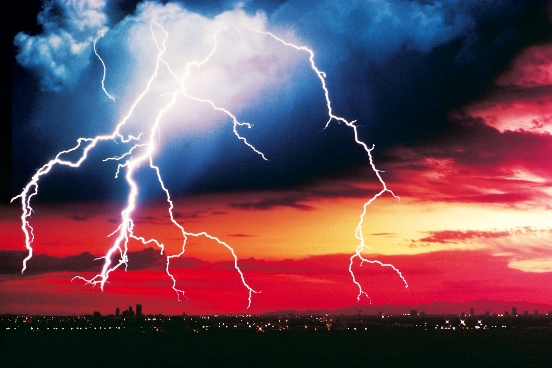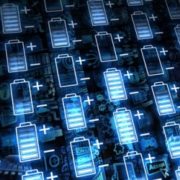The Geonode team uncovered the often overlooked yet potentially fatal connection between using gadgets during thunderstorms. It’s one of those things we often don’t think about.
RELATED: 5 mobile tech gadgets elevating life on-the-go
As we approach winter, it’s a good time to consider the risks and essential safety precautions associated with the use of gadgets during thunderstorms.
For many of us, the concept of electricity can seem quite mundane. But lightning, an uncontrolled and unpredictable form of electricity, can bring disastrous consequences when combined with the gadgets in your home. In an electrical storm, hundreds of millions of volts dart through the atmosphere, and anything remotely conductive in its path could offer an unintended route to the ground.
“Devices plugged into the wall during a storm essentially create a path for the lightning to follow into your home,” warns expert Emmett Lane. “Once the lightning hits the electrical system of your house, it then follows the wiring, which eventually leads to your device.”
The shocking truth is that even if lightning doesn’t directly strike your home, it can still cause a power surge that could destroy all devices plugged into electric outlets.
Using gadgets during a thunderstorm could turn deadly, and here’s why.
1. Electrocution Hazard
One of the most immediate dangers of using gadgets during a thunderstorm is the risk of electrocution. Lightning, with its powerful electrical charge, can strike homes, trees, and anything in its path. When you’re using a plugged-in device like a laptop or smartphone, you become a potential conductor for that lightning. If lightning were to strike your home, the electrical surge could travel through your devices and into your body, resulting in severe injury or even death.
2. Fire Risk
Gadgets, especially those with lithium-ion batteries, can heat up during use. If lightning strikes your home and causes a power surge, it could overload your gadgets, leading to a fire hazard. It’s not uncommon for electronic devices to malfunction during power surges, and the consequences can be disastrous if a fire starts during a thunderstorm.
3. Damaging Power Surges
Lightning can cause power surges that go beyond just harming your gadgets. It can damage the electrical infrastructure in your home, leading to costly repairs and replacements. Surge protectors may offer some protection, but they are not foolproof, especially when lightning is involved. It’s better to unplug your devices entirely during a storm to minimize the risk.
4. Distraction
Using gadgets during a thunderstorm can be distracting, diverting your attention from the immediate dangers outside. You might miss important emergency alerts or fail to notice worsening weather conditions. Your focus should be on staying safe during the storm, not on your screen.
5. Outdoor Hazards
Using gadgets outdoors during a thunderstorm is even riskier. If you’re caught in the open with a metal device in your hand, you become a prime target for lightning strikes. Seeking shelter is the best course of action when you’re outdoors during a storm, and using gadgets can discourage you from doing so.
6. Water Damage
Thunderstorms often bring heavy rain. Using gadgets, especially if you’re near open windows or doors, can expose them to water damage. Water and electronics don’t mix well, and even a small amount of moisture can lead to device malfunction or electrical hazards.
What can you do to protect yourself?
So, how can we avoid these shocking hazards? Emmett Lane advises on steps we can take to minimize risk:
Stay away from all wired gadgets: To emanate safety, avoid using laptops, mobile phones, or any other electronic appliances during a thunderstorm.
Unplug your gadgets: Disconnect all electrical appliances from their source to minimize any risk of electrical surge.
Invest in surge protectors: Though not foolproof, surge protectors can save your device during mild power surges.
Avoid showers: Water is a good conductor of electricity. Therefore, avoid showering or washing dishes during a thunderstorm.
In case you need to use a phone during an electrical storm, stick to cordless or mobile devices only when they are not plugged into an electrical outlet.
Don’t Neglect the Risks
Possibly, one of the reasons people remain unmindful of this danger is because of the rarity of these accidents. Yet, despite their infrequency, it is essential to remember that lightning does not discriminate—and when it does hit, the damage can be catastrophic.
To rephrase a famous saying: an ounce of prevention is worth a pound of cure. When it comes to thunderstorms and their inherent risks, a bit of caution can go a long way.
The ultimate takeaway? Unplugging your devices or suspending their use may feel like an inconvenience, but is easily justified compared to the potential harm and damage caused by a single lightning-induced power surge. Safety should never be compromised. Because, as introduced by our Geonode expert, Emmett Lane, “It’s not about the odds. It’s about the stakes. And in this case, the stakes can be quite high”.































